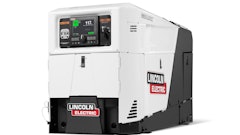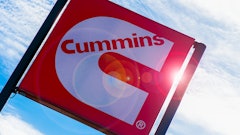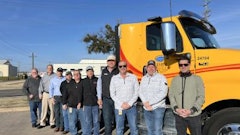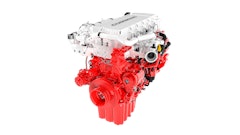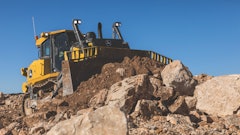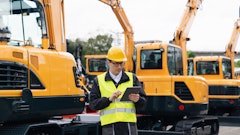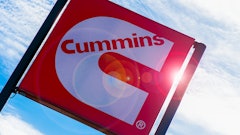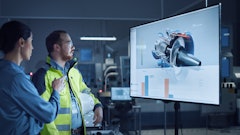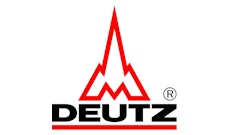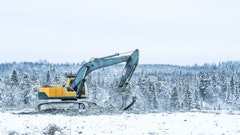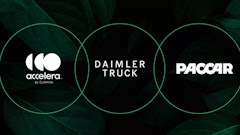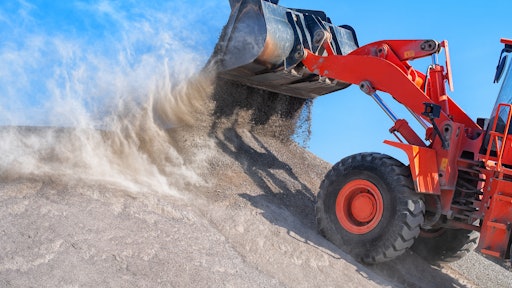
As original equipment manufacturers (OEMs) continue to work toward meeting regulatory changes and pinpointing new sustainability goals, the name of the game is emissions reduction. While electrification is leading the way today, fuel efficiency remains key to traditional powertrain success, and product diversification is the future.
Vehicles within the automotive, on-highway and commercial markets have seen the most engaged transition toward powertrain electrification. Particularly in the automotive market, powertrain suppliers are electrifying rapidly, creating both pressure and opportunity for suppliers. According to McKinsey & Company, electric vehicle sales between 2020 and 2022 grew by more than 90% in both the U.S. and Europe and by more than 300% in China.
In the commercial truck space, major players have begun to join forces in the hopes of taking the lead in electrification. Partnership acceleration is also a critical step in solving current electric charging infrastructure problems. According to Tim Campbell, managing director at Campbells Electric Vehicle Consultancy, “Partnership is the key. Not one manufacturer can do it alone. Whether it’s Cummins, Daimler Truck and PACCAR producing batteries in Mississippi, or Daimler Truck, Volvo Group and TRATON Group, which is Scania and Navistar, building an infrastructure of 1,700 high-powered chargers across Europe — if we don’t get the infrastructure right, we don’t get the trucks on the road, the customer doesn’t buy them, you don’t engage with them. So that’s an important part of the game.”
In electrification within the off-highway realm, OEMs are challenged with more demanding power requirements and more diverse end-user needs, applications and equipment sizes across various industries. And while electrifying larger equipment is a tougher challenge due to demanding duty cycles and high power consumption and weight considerations, great opportunity remains in the electrification of smaller equipment. Successful launches in smaller electric equipment categories such as excavators, scissor lifts, compact wheel loaders, etc., from names like Volvo Construction Equipment, JLG, Caterpillar and others, provide good examples.
John Deere Power Systems Director, Global Marketing and Sales, Nick Block says battery-electric offerings will play a key role for applications such as turf equipment, compact utility tractors, small tractors, compact construction equipment, and some road-building equipment.
According to Interact Analysis Principal Analyst James Fox, “Electrification of smaller off-road machines is flourishing. Forklifts were already 64% electric in 2022 (including a small amount with fuel cells), scissor lifts were 89%, and boom lifts 25%. Largely, as a result of this, 1.5 million or 27% of off-highway vehicles/machines covered by this report were already electric in 2022. However, if we exclude these categories, fully electric vehicles did not even reach 0.1% in off-road during 2022, with 2027 forecast to be just under 1% and 2030 about 5%. This is a much slower pace of growth than the truck and bus market.”
And while the electrification trend will continue to buzz, many OEMs have begun to emphasize the need for powertrain diversification, offering multiple solutions to both meet customer needs and offer lower-emissions products. This conversation surrounding the future of powertrain technology is focused on balancing emissions reduction with efficiency gains, the importance of natural gas, hydrogen and renewable energy, as well as emerging emissions regulations.
Although, as OEMs continue to diversify and develop alternatives, many remain in support of a future for more traditional power options like the internal combustion engine (ICE), powered by petroleum-based fuels like gasoline, diesel and natural gas and renewable bio-based fuels.
According to Statista, ICE offerings were the dominant powertrain in off-highway equipment worldwide in 2021, accounting for about 95% of the value of total sales that year, while sales of off-highway equipment with electric and hybrid powertrains made up only 5% of the total sales value. This data indicates that ICE is projected to retain its dominance in the off-highway equipment market in the coming years.
For many, environmental regulations will be top of mind as the industry looks to future emissions requirements, which will be significantly more stringent and demanding in the development of new technologies in both the on- and off-highway segments.
Block says that by 2026, John Deere aims to offer customers a variety of electric equipment solutions, including more than 20 electric and hybrid models designed to reduce the carbon footprint of the off-highway industry.
“For heavy-duty applications like those found in the construction industry, we believe there is still a long lifetime ahead for compression ignition engine technology and we are investing in it accordingly with product advancements like [John Deere Power Systems’] next-generation engine lineup,” said Block.
As OEMs and product teams to look toward the future, emissions reduction and sustainability will continue to factor into decision-making, research and future product development.
For example, in 2023, Cummins invested $1.5 billion in the research and development of new engine platforms and technologies. The company also funded $1 billion in upgrades to two of its engine plants to enable the production of fuel-agnostic platforms. “We ultimately believe that there will be a place for more efficient diesel, natural gas and hydrogen internal combustion engines for many years in the commercial vehicle markets we serve,” said Brett Merritt, vice president and president, Engine Business, Cummins. “These products, together with Accelera by Cummins zero-emission products, will help our customers of all shapes and sizes, reduce emissions today and well into the future.”
Kathy Wells is editor of OEM Off-Highway magazine.













